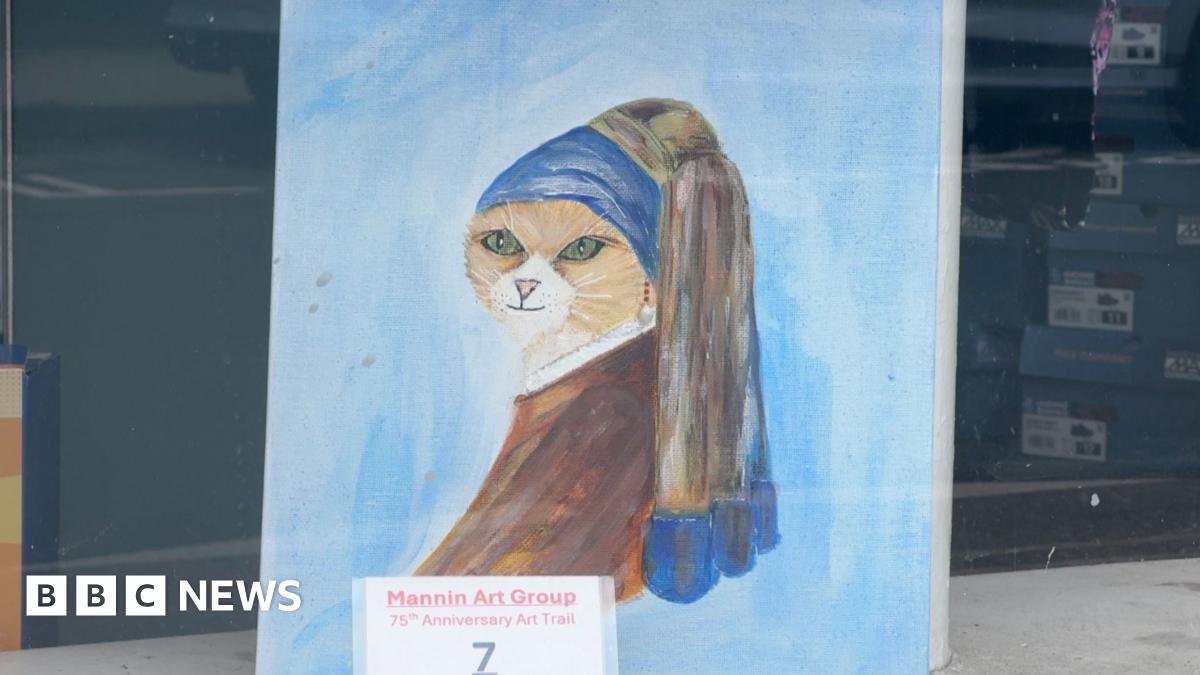Lenham Heath artist Clive Lennard on the challenges and pleasures of portrait painting

The great thing about living in Kent is that there is most often space for gardens and how often do our featured artists work from a shed in the garden? Clive Lennard is no exception. His studio is the shed at the bottom of his garden in Lenham Heath, where he has lived since 1984.
A great advantage of Lenham Heath, he tells me, is that it’s easy to get to other parts of the county if he gets a commission, and he likes the proximity to the Kent coastline.
Clive attended Gillingham Technical School and then Gravesend School of Art (“long defunct”), but finished off his training at Edinburgh School of Art with what is now an MA.

He has taught all his life, to both adults and children and he now gives talks at art societies. He says there was no epiphany in being an artist, but he was given oil paints at age 10, which spurred him on, leading him to join the school art club. There was a time when he wanted to be a cartoonist.
Clive thinks formal art training is very important: “Learning to draw improves observation, makes you sensitive to what you see. Take no notice of instructions. Look out for what is different,” he tells me.
Clive has created a series of portraits of people. Indeed, when I went to see him at the Pilgrims’ Way Artists’ show in Lenham, he was ensconced behind his easel, working on a dual portrait.

I asked what the particular challenges were for portrait painting. “The thing you have to get right is the eyes. If you cover up eyes in a portrait it is unsettling.”
I remark that it is said most of the expression for a portrait rests in the eyes and eyebrows, to which he agrees.
As for spectacle wearers, Clive says: “If the sitter can’t take the glasses off, then I will paint them, but it is important that there is no reflection in them.”
He is not particularly fussy about pose – “full frontal is easiest, but I like the challenge of a three-quarters or profile” – and because it is mutually more convenient for the commissioner to give photographs for Clive to paint from, this is the most common way of creating the portrait.
However, Clive does also attend a group session at Little Chart on a Wednesday morning, when he will paint from life.
Does he find he tends to ennoble the features of his sitters? He hesitates, but says no. “I paint what I see. I have had no complaints, so perhaps I paint through rose-tinted spectacles!
“I see the character in people’s faces. I don’t need to see any movement and I don’t try to portray emotion.”
Formerly using oils, Clive now paints in acrylics (“nobody can tell it from oil: it looks good too”) and the particular type he prefers is slow-drying acrylic, which is not the traditional type, being quicker to clean up and odourless.
He paints on MDF with an acrylic gesso base, which is like an undercoat and not shiny. It replaces the traditional gesso, which was made of oiled sheep’s hide.
If a sitter requests it, he will paint on canvas, although MDF tends to be cheaper and more convenient.
Clive prefers to work on smaller and smaller boards these days, usually now about 16in x 12in. Unlike Lucien Freud who liked to paint people he knew, Clive is not bothered about whether he knows his subject or not.
So I ask is portraiture popular? “It’s going through a bit of a revival at the moment,” Clive replies. As a result of the Lenham show, for example, Clive has received seven new commissions.
His most exciting work was a portrait of Lullingstone’s Tom Hart Dyke (“he was such a nice person!”) and as far as painting is concerned, he just hopes to continue doing more of it.
Though again Clive says he does not necessarily build up a relationship with his sitters. He also paints pets and wildlife portraits, having recently painted wild cats for the Big Cat Sanctuary at Smarden, then donated them.
Find out more
See Clive Lennard’s work a Val Gould Designs, 35 Harnet Street, Sandwich CT13 9ES, 01304 611104 or contact Clive on 01622 858266 for commissions.
You can also see his work at the Big Cat Sanctuary, Headcorn Road, Smarden, Ashford TN27 8PJ, 01233 771915





